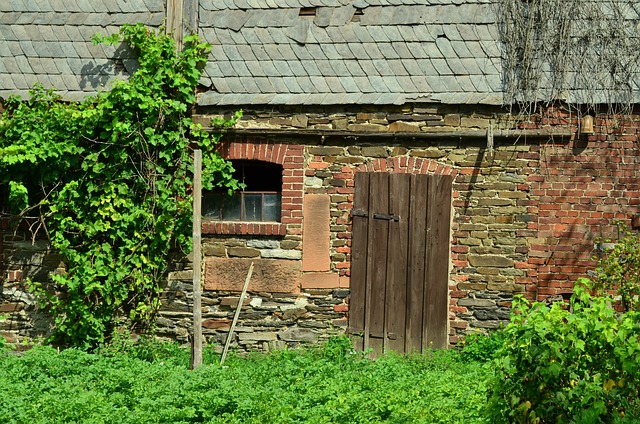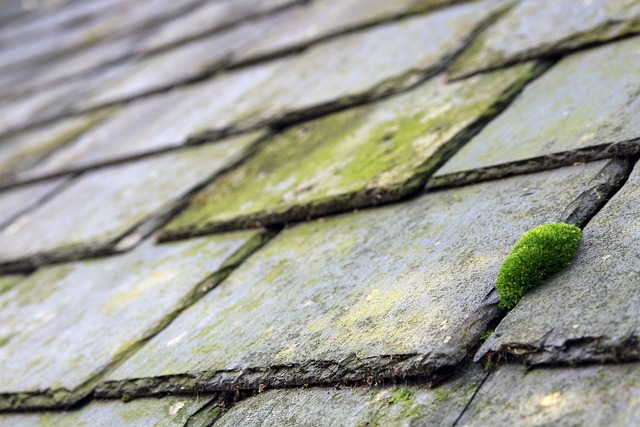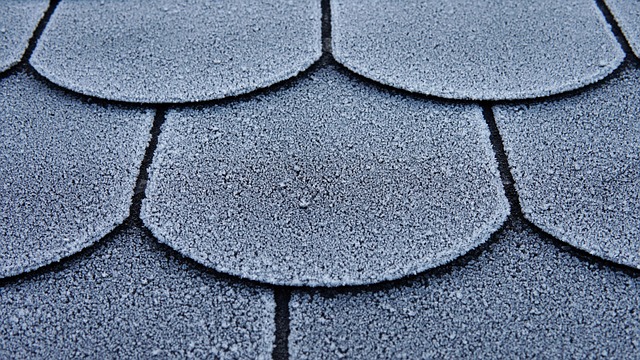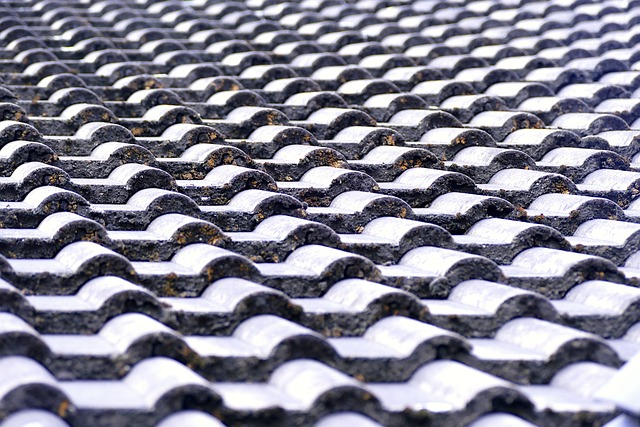A slate roof inspection in Springfield, MA, is a critical task that should be conducted with meticulous attention to detail and at least once a year, especially following extreme weather. The inspection must cover the underlayment, flashing, slates, fasteners, and structural support, checking for signs of distress such as tears, corrosion, cracks, or missing pieces. Homeowners should be vigilant for wear like broken or missing slates, algae or moss growth, and ensure they have the right tools and safety gear for a thorough assessment. Regular inspections are essential to identify weather-related damages such as chipping or lifting slates caused by Springfield's variable climate, which includes harsh freeze-thaw cycles and spring rains. Prompt repairs of any detected issues are necessary to maintain the waterproof integrity and structural soundness of your slate roof, thereby extending its lifespan and protecting your property from potential leaks and water damage. Regular, diligent inspections are key to ensuring that your slate roof stands up to Springfield's elements over time.
When it comes to safeguarding your home from the elements, a robust slate roof stands as a testament to enduring craftsmanship. To ensure this durability, regular inspections are paramount. This article delves into the intricacies of slate roofing in Springfield, MA, guiding readers through a comprehensive slate roof inspection process. From deciphering the anatomy of slate roofs to recognizing signs of wear and tear, we’ll cover essential tools for inspection, common damage types, and the effects of seasonal weather. Additionally, we’ll discuss testing methods for slate integrity, documenting findings effectively, and the importance of professional assessments in maintaining your slate roof’s longevity. For those seeking to repair or replace slate tiles, we’ll outline best practices, along with providing information on local resources in Springfield, MA for all your slate roofing needs.
- Understanding Slate Roof Anatomy for Effective Inspection
- The Signs of Slate Roof Wear and Tear to Look Out For
- Essential Tools and Equipment for a Comprehensive Slate Roof Inspection
- Step-by-Step Guide to Inspecting Slate Roofing in Springfield, MA
- Identifying Common Damage Types in Slate Roofs
- Assessing the Impact of Seasonal Weather on Slate Roofs
Understanding Slate Roof Anatomy for Effective Inspection

When conducting a slate roof inspection in Springfield, MA, it’s crucial to have an intimate understanding of the components that make up this resilient yet sophisticated system. A slate roof comprises several key elements: the underlayment, flashing, slates themselves, fasteners, and the structural support. The underlayment acts as a waterproof barrier between the deck and the slates, safeguarding against moisture intrusion. Flashing components, such as those around chimneys, vents, and valleys, direct water flow away from sensitive areas. Each slate is carefully positioned and secured with fasteners to prevent uplift during high winds or heavy snowfall. The structural support, including the rafters and trusses, must be intact to bear the weight of the slates and any additional loads.
Understanding these components is vital for a thorough inspection. Homeowners and professionals alike should look for signs of wear or damage in each part. For instance, check the underlayment for any tears or punctures that could lead to leaks. Examine the flashing for corrosion or misalignments that might compromise their efficiency. The slates themselves should be inspected for cracks, broken edges, or missing pieces; these can lead to leaks and may necessitate repair or replacement. Fasteners must be checked to ensure they are secure and have not rusted or deteriorated over time. Lastly, assess the structural support to confirm it remains stable and capable of supporting the roof’s load. This meticulous process ensures that any issues can be identified and addressed promptly, maintaining the integrity and longevity of the slate roof system in Springfield, MA.
The Signs of Slate Roof Wear and Tear to Look Out For

When conducting a slate roof inspection in Springfield, MA, homeowners and professionals alike should be vigilant for signs of wear and tear that can compromise the integrity of the roof. One of the most apparent indicators is the presence of broken or missing slates. These can be easily spotted during an inspection, as they will be conspicuously absent or fragmented along the roof’s surface. It’s crucial to replace these promptly to maintain the structural stability of the roof. Additionally, watch for signs of algae or moss growth, which can trap moisture against the slate and lead to decay. These growths often appear as dark or greenish patches on the slates, especially in areas with less sunlight exposure. Furthermore, pay close attention to the underlayment and flashing areas, as these are common leak points even in a well-maintained slate roof. Any noticeable damage or deterioration here should be addressed to prevent water infiltration that could cause more extensive damage over time. Regular inspections during spring and fall, or after severe weather events, are key to preemptively managing issues before they escalate. For professional and thorough slate roof inspection services in Springfield, MA, it’s advisable to consult with experienced local contractors who specialize in slate roofing systems. Their expertise can ensure the longevity and safety of your home’s roof.
Essential Tools and Equipment for a Comprehensive Slate Roof Inspection

When undertaking a slate roof inspection in Springfield, MA, it is crucial to be equipped with the necessary tools and equipment to ensure a thorough assessment. A sturdy ladder that allows for safe and close access to the roof’s surface is indispensable. This enables inspectors to closely examine each slate for signs of damage, such as cracks, chips, or broken edges that could compromise the integrity of the roofing system. Alongside the ladder, a set of high-quality hand tools, including a hammer and chisel, is essential for safely removing any questionable slates for a closer examination. These tools also allow for minor repairs during the inspection process.
In addition to physical tools, protective gear is paramount. Safety harnesses and fall protection equipment are vital to prevent accidents when moving across the roof’s slope. Gloves and eye protection will safeguard the inspector from sharp edges and potential debris. A reliable magnifying glass can aid in identifying subtle imperfections on the slate that might escape an unassisted visual inspection. Lastly, a digital camera or smartphone with a high-resolution camera function is beneficial for documenting findings, which can be crucial for insurance claims or future reference. With these tools and equipment, a professional can conduct a comprehensive slate roof inspection in Springfield, MA, ensuring the longevity and safety of the structure.
Step-by-Step Guide to Inspecting Slate Roofing in Springfield, MA

When the snow melts and the weather turns milder in Springfield, Massachusetts, it’s an opportune time to conduct a thorough slate roof inspection. A regular check-up ensures the integrity and longevity of your slate roof. Start by safely accessing your roof, preferably on a dry day with good visibility. Use sturdy footwear and consider hiring professionals if you’re uncertain about safety. Examine each slate individually, looking for signs of wear, such as cracks, chips, or loose tiles. Pay close attention to areas prone to ice damage, as these can cause slates to break or dislodge. Use a pair of binoculars to inspect hard-to-reach sections from the ground, and a pair of gloves to handle any slates that need to be removed for a closer look.
Identify and note any damaged slates, as they must be replaced promptly to maintain the waterproof integrity of your roof. Take special care to check the underlayment beneath the slates for any signs of moisture seepage, which can lead to further damage if left unaddressed. In Springfield MA, where seasonal weather changes are significant, it’s crucial to address any issues found during your inspection quickly. After documenting all necessary repairs, contact a reputable slate roofing specialist with experience in the unique requirements of slate roofs in the region. They can perform the repair work, ensuring that your slate roof remains a durable and attractive feature of your property for years to come. Remember to schedule regular inspections each spring to stay ahead of potential issues and extend the lifespan of your slate roofing system in Springfield, MA.
Identifying Common Damage Types in Slate Roofs

When conducting a slate roof inspection in Springfield, MA, homeowners and professionals alike should be vigilant for common types of damage that can compromise the integrity and longevity of the roof. One of the most apparent signs of damage is physical breakage or chipping. Slates may become cracked or broken due to extreme weather conditions like hail or high winds, which can cause sudden impact or prolonged pressure. These breaks can expose underlying materials to the elements, leading to water infiltration and potential structural issues. Homeowners should inspect their slate roofs after such events to identify any chipped slates that require replacement.
Another common issue is slate lifting or slipping. This occurs when the fasteners securing the slates to the roof deck lose their grip, often due to corrosion or loosening over time. The result is slates that are no longer properly aligned, which can lead to leaks and further damage. During a slate roof inspection in Springfield, MA, it’s crucial to check the fixings and ensure they are securely fastened. Any slates found to be lifting should be re-fixed or replaced to maintain the waterproof barrier that protects the home. Regular inspections can help catch these issues early, prolonging the lifespan of the slate roof and preventing costly repairs down the line.
Assessing the Impact of Seasonal Weather on Slate Roofs

When evaluating slate roofing for damage, it’s imperative to consider the impact of seasonal weather changes, as they can significantly influence the integrity and longevity of the roof. In Springfield, MA, where diverse climates are a norm, slate roofs are particularly susceptible to the elements. The freeze-thaw cycles common in winter can cause tiny cracks to expand, potentially leading to more severe damage over time. Residents should conduct thorough inspections following these cycles to ensure the slate remains intact and secure. Similarly, spring rains bring a different set of challenges, as water penetration can reveal existing weaknesses or create new ones if not promptly addressed. The key to maintaining a slate roof’s performance lies in regular, meticulous inspections that can detect issues early on, preventing larger problems that may arise from the relentless seasonal shifts typical of Springfield’s climate. Homeowners and professionals conducting slate roof inspection in Springfield, MA should pay close attention to signs such as chipped edges, loose slates, or unusual patterns of water intrusion, all of which can be indicative of weather-related damage. By understanding the seasonal impact on slate roofing and implementing a vigilant maintenance schedule, property owners can safeguard their homes against the elements and prolong the lifespan of their slate roofs.
In concluding this exploration into the intricacies of slate roof inspection, it’s clear that a thorough understanding of slate roof anatomy, coupled with vigilance against wear and tear, is paramount for maintaining the integrity of these durable systems. Residents of Springfield, MA, can benefit significantly from regular inspections using the right tools and following a structured approach to identify and address common damage types, all while considering the effects of seasonal weather patterns. A professional slate roof inspection in Springfield MA serves as an essential precaution against the elements, ensuring the longevity and safety of one’s home. With the guidance provided herein, property owners can now approach their slate roof inspections with confidence and precision, safeguarding their residences from the top down.
